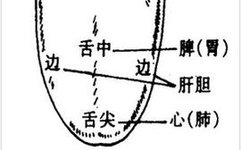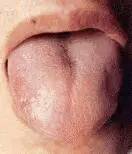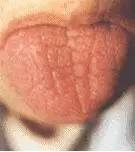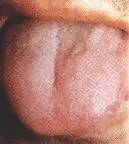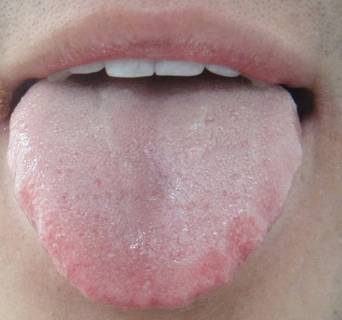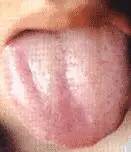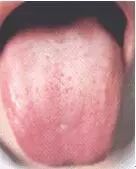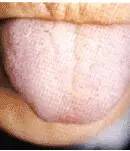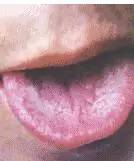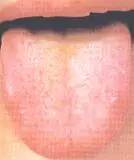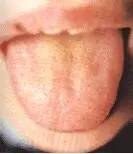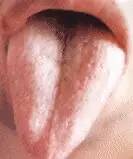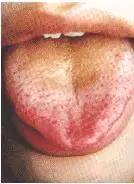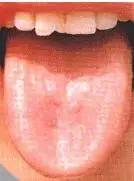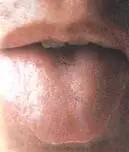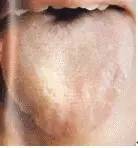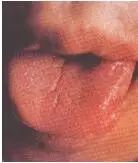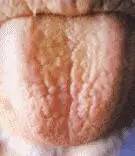In Traditional Chinese Medicine (TCM), diagnosis relies on observation, listening, inquiry, and pulse diagnosis, and the integration of the four diagnostic methods is essential for accurately determining the underlying pathology, especially as pulse diagnosis provides real-time and precise feedback.
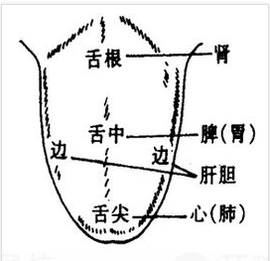
However, among the four diagnostic methods, the general public can greatly benefit from self-examination through tongue observation and monitoring changes in the tongue coating to assist in understanding their overall health and disease status. Below are introductions to several common tongue coatings, which we hope will be helpful to you.
Based on long-term pulse diagnosis experience, tongue coating is merely an auxiliary tool for determining pathology; one should not prescribe or select acupuncture points based solely on a glance at the tongue coating. It has been observed multiple times that after treatment, significant changes in the pulse can occur within a few days, while the tongue coating may remain unchanged. The information provided by the tongue coating is more suitable for chronic diseases and conditions with slow changes.
In actual clinical practice, without integrating the four diagnostic methods, even if one assesses the tongue, it is still far from sufficient for accurately prescribing or selecting acupuncture points to regulate Qi, given the current level of most TCM practitioners!
Especially without pulse diagnosis information, relying solely on the tongue for diagnosis can lead to misconceptions! We hope readers can master some skills in tongue diagnosis and not be misled by incompetent practitioners!
Normal Tongue Appearance: The tongue body is soft, flexible, light red in color, and covered with a thin, evenly distributed, moderately moist white coating, often described as “light red tongue with thin white coating.”
Observing the tongue primarily involves examining changes in tongue quality and coating. The tongue quality, also known as the tongue body, refers to the muscular and vascular structure of the tongue. The tongue coating is a layer of coating attached to the tongue body. The term “Qi in the stomach” refers to the spleen’s ability to transform and transport, with the stomach being responsible for receiving (indicating normal digestive function). When the physiological functions of the spleen and stomach are normal, a thin, moist coating can be observed on the tongue.
During the pathological changes of the body, the fluctuations of Yin and Yang, the balance of Qi and blood, and the existence of body fluids can all be directly reflected in changes in the tongue coating. By observing changes in the tongue coating, one can understand the state of the internal organs (organ pathology) and the severity of disease.
Cracked Tongue
Illustration: The tongue surface shows varying degrees of cracks, which are referred to as a cracked tongue.
Main Conditions and Related Research: A cracked tongue is often indicative of a condition of Yin deficiency with excessive heat.
Main Conditions of Cracked Tongue:
(1) Excessive heat injuring Yin, often presenting as a red tongue with cracks;
(2) Blood deficiency leading to lack of moisture, often presenting as a pale tongue with cracks;
(3) Spleen deficiency with dampness, often presenting as a pale, swollen tongue with teeth marks and cracks. Treatment should focus on nourishing Yin essence, benefiting Qi, and generating fluids; tonifying the spleen and draining dampness; nourishing Yin and clearing heat; and clearing heat and moistening dryness. Additionally, a cracked tongue refers to cracks in the tongue body as well as cracks in the tongue coating; during diagnosis, one should differentiate based on the dryness or moisture of the coating. If the cracks are due to dryness, it indicates an external pathogenic disease with heat injuring fluids and severe dryness.
If the coating has moisture but is cracked, it is often due to Qi deficiency. Modern research suggests that shallow cracks on the tongue are primarily due to atrophy of the tongue mucosa, causing the longitudinal or transverse grooves to become visible, while deep cracks indicate more severe atrophic changes in the tongue, leading to loss of normal structure in the epithelial layer, with some papillae flattening and merging, while others atrophy and break, revealing thickened scar tissue beneath.
According to the “Guide to Tongue Diagnosis – Basic Tongue Quality” it is believed that a normal tongue has no cracks, while the presence of cracks indicates blood deficiency, with the depth and number of cracks reflecting the severity of blood deficiency.
—— A tongue with horizontal cracks indicates a deficiency of Yin, such as a tongue with ice-like cracks, often seen in elderly individuals with Yin deficiency;
—— A red tongue with no coating or with horizontal cracks that are short indicates Yin deficiency with fluid depletion;
—— A tongue with cracks resembling the character “人” or “川” indicates dryness of the stomach with fluid depletion and internal heat pressing down.
—— A red tongue with cracks resembling the character “人” indicates an initial invasion of evil into the heart or the inappropriate use of cooling herbs for Yin conditions;
—— A red tongue with cracks and significant thirst indicates upper digestive issues;
—— A tongue with thick yellow greasy coating and cracks indicates internal heat in the organs;
—— A tongue with no coating and cracks indicates Yin deficiency with fire;
—— A dry cracked tongue indicates insufficient stomach Yin, with phlegm-heat congealing;
—— If the tongue is red with a cracked tip and has blood spots and pain, it indicates significant depletion of Yin fluids and excessive heart fire;
—— A tongue with yellow patches and cracks indicates Qi and blood deficiency;
—— A red tongue with black cracks indicates a cold condition of the Yang;
—— A tongue with cracks resembling the character “人” at the back indicates kidney Qi affecting the heart;
—— A tongue with streaks indicates a deficiency of stomach Qi;
—— A pale tongue with numerous cracks indicates spleen deficiency with dampness; a red tongue with a few black cracks and a slippery coating indicates a cold condition of water overpowering fire;
—— A tongue showing blue streaks indicates a weak stomach Qi in febrile diseases, while in mixed diseases, it indicates cold accumulation in the palace;
—— A cracked tongue with bleeding indicates blood scorching and dryness, with bleeding at the tip indicating excessive heart fire.
—— Due to the complexity of cracked tongue conditions, they are relatively rare in clinical diseases, and specific references can be made to various accompanying conditions. Patients with this type of tongue appearance generally have complex conditions, and treatment should be based on differential diagnosis.
Swollen Tongue
Illustration: A swollen tongue is characterized by a soft, enlarged tongue, often with teeth marks on the edges, and a pale, tender color.
Main Conditions and Related Research: A swollen tongue has also been discussed in ancient texts in relation to a swollen tongue. In fact, a swollen tongue is caused by deficiency of the spleen’s Yang Qi, or it may be accompanied by cold dampness, leading to an enlarged, soft, pale tongue, often with teeth marks, indicating a deficiency condition, and should be distinguished from a swollen tongue.
Main Conditions of Swollen Tongue:
(1) Spleen deficiency, presenting as an enlarged, tender tongue with a pale color. The edges may have teeth marks, the coating is thin and white, the face is pale and cold, with little energy and a tendency to speak less, fatigue, reduced appetite, abdominal fullness, and loose stools, with a weak or slow pulse. This is often due to water and phlegm obstructing the spleen, leading to retention of dampness in the tongue, causing it to swell. If the tongue is pale and tender, with a slippery surface, it indicates deficiency of spleen and kidney Yang, with Qi unable to transform fluids, leading to dampness rising. Treatment should focus on tonifying the spleen and benefiting Qi, with formulas such as Li Zhong Tang and Bu Zhong Yi Qi Tang.
Clinically, this tongue appearance is often seen in patients with obesity, hypothyroidism, anemia, etc. Commonly used TCM formulas include Ren Shen Jian Pi Wan, Huo Xiang Zheng Qi Wan, Shen Ling Bai Zhu Wan, Fu Zi Li Zhong Wan, and Jia Wei Bao He Wan.
(2) Kidney deficiency with water retention, presenting as a large, swollen, tender tongue with a pale color and teeth marks on the edges, with significant swelling below the waist, reduced urination, cold limbs, a dull or pale complexion, and a slow or weak pulse. Treatment should focus on warming Yang and promoting urination, using Jin Gui Shen Qi Wan, Zhen Wu Tang, etc. Additionally, if the tongue is pale and swollen with a yellow greasy coating, it often indicates damp-heat in the spleen and stomach, with phlegm turbidity rising. Treatment should focus on transforming dampness and resolving phlegm, using Yin Chen, Mu Tong, Hua Shi, Shi Gao, and Zhi Zi to clear heat and promote dampness. Clinically, this tongue appearance is often seen in patients with chronic glomerulonephritis, pyelonephritis, etc. Commonly used TCM formulas include Jin Gui Shen Qi Wan, Ji Sheng Shen Qi Wan, Bu Yao Jian Shen Gao, Shen Yan Wen Yang Pian, and Shen Yan Xiao Zhong Pian.
Teeth-Marked Tongue
Illustration: A teeth-marked tongue shows impressions of teeth along the edges of the tongue.
Main Conditions and Related Research: A teeth-marked tongue is often caused by the tongue body being enlarged and pressed by the teeth, thus it is often seen alongside a swollen tongue, and is mostly associated with spleen deficiency, indicating a deficiency condition. If the tongue is pale and moist, it indicates spleen deficiency with cold dampness.
The cause of a teeth-marked tongue is often due to spleen deficiency failing to transform and transport water and dampness, leading to obstruction in the tongue and causing it to swell, which is then pressed by the teeth, resulting in the marks. Thus, a teeth-marked tongue is often seen alongside a swollen tongue, as it can be due to tongue edema, indicating spleen Yang deficiency and excess dampness, or due to relaxation of the tongue muscles, insufficient opening of the mouth, indicating spleen Qi deficiency.
Main Conditions of Teeth-Marked Tongue:
—— Pale and moist with teeth marks indicates excess cold dampness;
—— Pale red with teeth marks indicates spleen deficiency or Qi deficiency;
—— Red and swollen with teeth marks indicates excess damp-heat and phlegm obstruction;
In summary, it can be divided into Qi deficiency and Yang deficiency types:
(1) Qi deficiency type: Spleen Qi weakness, main symptoms: pale tongue, thin white coating, swollen and tender tongue, teeth marks on the edges, pale complexion, shortness of breath, fatigue, abdominal distension, loose stools, and weak pulse. Treatment should focus on tonifying Qi.
(2) Yang deficiency type: Main symptoms: pale tongue, moist with much fluid, or slippery surface, swollen and tender tongue with teeth marks. Pale or bluish complexion, fatigue, preference for warmth, reduced appetite, cold pain in the abdomen, warmth provides relief, cold limbs, clear urine, or edema, with a weak pulse. Treatment should focus on warming Yang. Commonly used TCM formulas include Ren Shen Jian Pi Wan, Huo Xiang Zheng Qi Wan, Shen Ling Bai Zhu Wan, Fu Zi Li Zhong Wan, and Jia Wei Bao He Wan.
Thin White Coating
Illustration: A thin white coating covers the tongue surface, evenly distributed and moderately moist.
Main Conditions and Related Research: A thin white coating, with a light red and moist tongue, is the most common tongue coating under normal conditions, indicating “Qi in the stomach.” The formation of a thin white coating is primarily due to the combined effects of chewing, swallowing, saliva, and diet, which continuously remove and shed substances between the filiform papillae of the tongue mucosa and the keratinized epithelium, resulting in only a thin white layer of coating on the tongue.
Formation of Thin White Coating: However, when external pathogens such as wind-cold, wind-dampness, and cold-dampness invade (the six excesses include wind, cold, heat, dampness, dryness, and fire), and the disease is still superficial (in the early stage), not yet penetrating deeply (worsening or developing), and the pathogenic factors (disease condition) are relatively mild, the Qi of the internal organs (organ function) is not harmed, a thin white coating is often observed on the tongue. Hence, there is a saying that “thin white coating indicates superficial conditions.”
According to the “Guide to Tongue Diagnosis,” it is stated that “whenever the tongue coating is white, moist, and thin, the evil is in the Wei level (in TCM, the Wei, Qi, Ying, and Blood levels are used to classify the severity of disease from superficial to deep, with Wei being the lightest level). Sweating can be used (to expel the pathogen),… such as with Ma Huang and Qiang Huo.” Commonly seen thin white and moist tongue coatings, with a normal tongue quality, are often associated with external wind-cold conditions. If accompanied by chills and fever, body aches, and stiff neck, with little or no sweating, a floating and tight pulse, Ma Huang Tang can be used with modifications; if the tongue is red with a thin white and moist coating, it indicates external wind-heat or external wind-cold transforming into heat, and Yin Qiao San can be used with modifications. Commonly used TCM formulas include Gan Mao Qing Re Chong Ji and Tong Xuan Li Fei Oral Liquid.
Thin White Dry Coating
Illustration: A thin white dry coating: the white coating is thin on the tongue surface, with less fluid and a tendency to be dry.
Main Conditions and Related Research: A thin white dry coating is due to damage to both the lung’s fluids and Qi, as Qi deficiency leads to an inability to transform fluids, and insufficient fluids lead to an inability to moisten the tongue; the coating becomes dry due to lack of nourishment.
Main Conditions of Thin White Dry Coating: Often seen in cases of wind-heat invading the lungs, where the pathogenic Qi injures the lungs, or due to Yang deficiency failing to transform fluids, leading to damage to both Qi and fluids in the lungs; the former should focus on clearing and moistening dryness, using Yin Qiao San with methods to nourish Yin and clear heat; the latter should focus on benefiting Qi and generating fluids, using Xuan Fei Yi Qi Tang to warm Yang and benefit Qi. The above thin white dry coating, if accompanied by symptoms of cold, cough, and white phlegm, can refer to medication. Commonly used TCM formulas include Yin Qiao Jie Du Wan, Yin Qiao Jie Du Chong Ji, and Qiang Huo Jie Du Wan.
Thick White Greasy Coating
Illustration: A thick white greasy coating: the tongue appears white and thick, with tightly packed or loose granules, which can cover the entire tongue or be thinner at the edges and thicker in the middle and root.
Main Conditions and Related Research: A thick white greasy coating is often due to insufficient Yang Qi in the middle burner, leading to stagnation of food, or due to accumulation of dampness and phlegm. According to the “Guide to Tongue Diagnosis”: “A white greasy coating on the tongue indicates chest oppression and pain, irritability, and dry vomiting; if water is ingested, it leads to vomiting, indicating heat due to stagnation of fluids, and should be treated with mild dispersing methods.”
Main Conditions of Thick White Greasy Coating: Indicates dampness, phlegm, and cold. A white greasy coating due to external cold and dampness indicates invasion of cold and dampness. Cold causes the tongue to appear white, while dampness leads to a greasy coating; since cold and dampness are superficial, the tongue may appear thin and greasy. Treatment should focus on warming and dispersing cold dampness, using Qiang Huo Sheng Shi Tang. A white greasy coating due to internal dampness and phlegm accumulation indicates invasion of damp-heat pathogens, which may also be due to internal dampness and external pathogens causing the condition; damp-heat enters the interior, accumulating between the membranes. When Yang Qi is obstructed, dampness rises, leading to a thick white greasy coating, or a coating that appears like accumulated powder.
Treatment should focus on clearing dampness and heat, using Da Yuan Yin. A white greasy coating due to internal stagnation of cold fluids indicates insufficient spleen Yang, leading to retention of fluids in the tongue, resulting in a thick greasy coating, or a slippery coating. Treatment should focus on warming Yang, strengthening the spleen, and promoting fluid movement, using Wen Pi Tang.
—— It is worth noting that heat due to stagnation of fluids leads to a thick white greasy coating without yellow coating; however, there is still internal stagnation of heat, which can lead to irritability and dry vomiting, indicating that this condition is different from damp-heat leading to yellow coating. Clinically, this tongue appearance is often seen in patients with bronchial asthma, pulmonary emphysema, pulmonary heart disease, rheumatic heart disease, and heart failure. Patients with this type of tongue appearance generally have complex conditions, and treatment should be based on differential diagnosis. Some commonly used TCM formulas include Xiao Qing Long He Ji, Su Zi Jiang Qi Wan, Zhi Sou Ding Chuan Oral Liquid, Yu Ping Feng Oral Liquid, Yang Shen Bao Fei Oral Liquid, Ge Jie Ding Chuan Wan, Sheng Mai San Oral Liquid, Guan Xin Sheng Mai Oral Liquid, and An Shen Yang Xin Wan.
White Coating with Dry Cracks
Illustration: A white coating with dry cracks appears white, which can be thin or thick, with rough granules and a dry, hard texture, resembling sand or stones.
Main Conditions and Related Research: White coating and dry cracks can appear simultaneously on the tongue, hence referred to as white coating with dry cracks. This condition is primarily caused by internal heat and sudden damage to fluids. It is often seen in acute warm diseases, where heat rises rapidly, damaging fluids, and true Yin is about to be exhausted, while the coating color has not yet turned yellow. If the coating is white and cracked but not excessively dry, it is often seen in summer heat, where heat damages Qi and is accompanied by dampness.
According to the “Tongue Diagnosis and Differentiation” it states: “A white coating with dry cracks is due to improper use of warming tonics, which injure true Yin, and if there is no yellow or black color, it indicates that true Yin is about to be exhausted, with the tongue lacking moisture, and the coating has dried out, hence unable to show other colors.”
Main Conditions of White Coating with Dry Cracks:
Indicates excessive heat damaging fluids; treatment should focus on generating fluids and clearing heat; indicates summer heat damaging Qi, with internal dampness; treatment should focus on clearing summer heat and benefiting Qi. Clinically, this tongue appearance is often seen in patients with external warm diseases and acute infectious diseases. Commonly used TCM formulas include Zi Xue San, Ling Qiao Jie Du Wan, and Ban Lan Gen Chong Ji.
Yellow Greasy Coating
Illustration: A yellow greasy coating appears yellow and sticky, with tightly packed granules, resembling a yellow powder coating the tongue surface.
Main Conditions and Related Research: A yellow greasy coating is formed by the combination of pathogenic heat and phlegm-dampness.
Main Conditions of Yellow Greasy Coating:
Indicates accumulation of damp-heat, phlegm transforming into heat, or food stagnation transforming into heat; also indicates external summer heat and dampness. Treatment should focus on clearing heat, transforming dampness, and resolving phlegm. Additionally, when diagnosing yellow greasy coating, one should also consider the tongue quality.
—— If the tongue is pale red with a yellow coating covering the tongue surface, and the coating is moist and not dry; if the edges and tip have a little white coating, it indicates that external pathogens have penetrated and transformed into heat, entering the Yangming stomach; the main condition is heat entering the Yangming, Qi level damp-heat syndrome, liver and gallbladder diseases, and urinary tract infections, as well as various febrile diseases. Treatment should focus on clearing heat and detoxifying, and unblocking the exterior and interior.
—— If the tongue is red with a yellow greasy coating, thick and thin, tight and delicate, especially at the root, it often indicates mutual binding of heat and phlegm, or dampness entering the interior transforming into heat, or warm heat binding in the stomach and intestines, not yet reaching the Yangming level.
—— If the tongue is deep red and shiny, it indicates severe heat in the Ying level; the main condition is mutual binding of heat and phlegm, damp-heat in the middle burner, and food stagnation in the stomach and intestines. Treatment should focus on clearing heat, transforming dampness, and guiding stagnation. If the tongue is purple with a dark yellow thick coating, moist but not dry, it indicates a mixed condition of cold and heat, with heat transforming from cold or cold transforming from heat, indicating a critical condition, often due to unresolved febrile diseases, severe heart Yang deficiency, prolonged phlegm retention, and external pathogens entering the interior transforming into heat; in hot summer, excessive consumption of cold foods can lead to internal cold and diarrhea; internal Yin excess can push heat upwards; or if there is pre-existing blood stasis, it can also lead to heat transformation. The main condition is true cold with false heat, heart and kidney Yang deficiency, and various symptoms such as diarrhea and asthma. Treatment should focus on warming and unblocking the heart and kidney, restoring Yang; clearing heat and transforming dampness; and invigorating blood and resolving stasis.
—— If the tongue is purple and dark with a yellow greasy coating, the tongue body is swollen, and the surface is covered with yellow coating, with white coating at the edges, especially at the root, it indicates that the evil heat and waste are binding in the stomach, leading to depletion of fluids. The tongue quality changes from red to purple, and the coating color changes from yellow to dark, indicating depletion of fluids. The main condition is febrile diseases invading the Ying level, or accompanying Yangming syndrome, with various infectious diseases and prolonged fever. Treatment should focus on clearing heat and unblocking the interior, cooling blood and detoxifying. Due to the complexity of yellow greasy coating conditions, they are often seen in various clinical diseases, and specific references can be made to various accompanying conditions. Patients with this type of tongue appearance generally have complex conditions, and treatment should be based on differential diagnosis.
Yellow Dry Coating
Illustration: A yellow dry coating appears yellow and dry with little fluid (fluids), indicating a pathological change due to evil heat damaging fluids.
Main Conditions and Related Research: Yellow dry coating has several causes:
(1) A thin yellow coating indicates that the external evil has transformed into heat and penetrated the interior, damaging fluids;
(2) A yellow coating that is dry indicates excessive heat in the Qi level, with fluids already damaged;
(3) A dry yellow coating covering the entire tongue indicates a condition of internal heat;
(4) If the coating is old yellow and dry with cracks, or has cracks, it indicates that the external evil has been resolved, and the evil Qi has penetrated the interior, accumulating in the organs.
(5) If the coating changes from thick to thin, and the color changes from dark to light, and it is dry with little fluid, it indicates that although the evil heat has retreated, the fluids have not yet been generated.
Main Conditions of Yellow Dry Coating:
Indicates evil heat penetrating the interior; treatment should focus on clearing heat and purging the interior. Excessive heat in the Qi level damaging fluids requires mild cold to clear Qi and relieve heat while preserving fluids. Internal heat conditions require bitter cold to purge and relieve heat. If the heat has retreated but fluids are still damaged, treatment should focus on sweet cold to generate fluids. Due to the complexity of yellow dry coating conditions, treatment should be based on the specific disease condition. Commonly used TCM formulas for clearing heat and detoxifying include Qing Re Jie Du Wan, Xin Qing Ning Pian, Zi Xue San, and An Gong Niu Huang Wan.
Yellow Coating
Illustration: Yellow coating is a common pathological tongue coating, which can also be seen in some healthy individuals.
Main Conditions and Related Research: Yellow coating seen in healthy individuals is primarily thin yellow coating and thin yellow greasy coating. Thick yellow greasy coating increases with age. Yellow coating can vary in color from light yellow, tender yellow, deep yellow, to burnt yellow, often distributed at the root and center of the tongue, and can also cover the entire tongue. As mentioned earlier, yellow coating can also be seen alongside other colors such as white coating, with variations in thickness, moisture, and texture.
Main Conditions of Yellow Coating: Indicates spleen and stomach diseases, interior conditions, and heat conditions. The “Comprehensive Guide to Tongue Diagnosis – General Discussion on Yellow Coating” states that yellow coating can be present in conditions of excess heat in the interior, while it is absent in conditions of deficiency cold. Evil heat scorching leads to yellow coating, with light yellow indicating mild heat, deep yellow indicating severe heat, and burnt yellow indicating heat accumulation. In cases of external pathogens, the tongue coating changes from white to yellow, indicating that the superficial evil has penetrated the interior and transformed into heat; in febrile diseases, this is associated with the Yangming level; in warm diseases, it is associated with the Qi level. However, yellow coating can also be seen in superficial and deficiency cold conditions: if the coating is thin white with a light yellow coating, it indicates wind-heat exterior syndrome or wind-cold transforming into heat; if the coating is light yellow and thick, it indicates chest damp-heat, with Qi stagnation. If the tongue is swollen and tender with a yellow coating, it indicates Yang deficiency with water retention, leading to transformation of fluids. Therefore, yellow coating is a basic indicator of interior conditions, but it is not absolute.
Modern research on the formation of yellow coating suggests that (1) yellow coating formation is related to elevated body temperature; (2) yellow coating is associated with inflammatory infections; (3) yellow coating is related to digestive dysfunction; (4) yellow coating is associated with microbial activity. In summary, researchers believe that yellow coating is most closely related to infections, inflammation, and fever, leading to digestive dysfunction, resulting in proliferation of filiform papillae on the tongue, reduced secretion from salivary glands, and local discoloration, along with inflammatory exudation and microbial activity contributing to the formation of yellow coating.
Thin Yellow Coating
Illustration: The tongue has a yellow coating, with thin yellow coating being a light yellow coating mixed with thin white coating.
Main Conditions and Related Research: Thin yellow coating is a common pathological tongue coating, which can also be seen in some healthy individuals. Commonly seen yellow coating is primarily thin yellow coating and thin yellow greasy coating. Thick yellow greasy coating increases with age. Thin yellow coating often develops from white coating, indicating that the disease has transformed from cold (one of the six excesses) into heat, penetrating from the exterior to the interior (indicating worsening or prolonged disease).
According to the “Fundamentals of Cold Damage” it states: “Whenever a thin yellow coating appears, it indicates that the heat is in the lungs and has not yet entered the stomach.” Here, the lungs refer to the Qi level (the lightest level in TCM), while the stomach refers to the interior (deeper level).
—— If the coating is thin yellow and moist, it indicates that the superficial evil has just entered the interior, with mild heat and no damage to fluids;
—— If the coating is thin yellow and dry, it indicates that the patient does not feel cold but rather feels hot, indicating that the external evil has just entered the Yangming (stomach) interior, or that warm heat is about to enter the Qi level, indicating that there is heat in the stomach but not yet severe; treatment should focus on using sweet cold to nourish fluids;
—— If the coating is thin white with a light yellow coating, it indicates wind-heat in the exterior or wind-cold transforming into heat, and treatment should focus on using mild cooling methods to resolve the exterior.
Commonly used TCM formulas for thin yellow coating include Yin Qiao Jie Du Wan, Yin Qiao Jie Du Chong Ji, and Yin Huang Oral Liquid.
Gray Coating
Illustration: Gray coating appears gray with a hint of black, referred to as “gray-black tongue coating.”
Main Conditions and Related Research: Gray coating, strictly speaking, differs in color and main conditions from black coating. However, as the coating darkens, it becomes gray; a deep gray coating is considered black, with gray indicating a lighter condition and black indicating a more severe condition, closely related to the progression and outcome of the disease.
Gray coating often develops from white coating, or may be seen alongside yellow coating. According to the “Guide to Tongue Diagnosis – Color Differentiation”: “Gray coating is a lighter form of black coating. If it is mixed with green and yellow, it becomes gray, and should be treated similarly to black coating.” Generally, it indicates interior conditions, but there are distinctions between cold and heat.
According to the “Cold Damage Fingerprint, Tongue Diagnosis Method”: “A gray-black coating that is slippery indicates that cold water is invading the earth, indicating a cold condition in the Taiyin. … Treatment should focus on regulating the middle burner. If gray-black coating appears in mixed conditions, it indicates that phlegm and dampness are harming the spleen, and treatment should focus on warming the middle burner and harmonizing the spleen to resolve phlegm.” It can be seen that gray coating is often moist, indicating internal phlegm and dampness; if the coating is gray and dry, it often indicates heat damaging fluids, seen in external warm diseases or internal injuries with mixed conditions; evil heat penetrating the interior, epidemic diseases, and blood stasis can also present with gray coating.
Main Conditions of Gray Coating: Gray coating that is dry indicates Yangming organ excess, with Yin fluids already damaged; if there is an excess condition, treatment should focus on purging with bitter cold; if there is no excess condition, with a fine and rapid pulse, treatment should focus on bitter cold to rescue fluids. If gray coating is sticky, it indicates internal phlegm and dampness, with warm diseases accompanied by phlegm and dampness, or other dangerous conditions, requiring careful differentiation. Treatment should focus on warming the middle burner, drying dampness, and using aromatic herbs to clear and transform. Gray coating that is slippery and moist, with vomiting and fine pulse, indicates Yang deficiency with cold, requiring warming Yang and dispelling cold, using Si Ni San or Li Zhong Tang. Additionally, gray coating can indicate cold, heat, or damp conditions, and clinical differentiation should consider tongue quality, moisture, and other symptoms.
Burnt Yellow Coating
Illustration: Burnt yellow coating appears as a deep yellow or brownish color, especially prominent at the center or root of the tongue.
Main Conditions and Related Research: Burnt yellow coating indicates internal heat accumulation in the stomach. According to the “Traditional Chinese Medicine Tongue Diagnosis”: “If the coating is yellow and dry, it indicates damage to stomach fluids; if it is burnt yellow and cracked, it indicates severe heat; if it is burnt yellow and black, it indicates extreme heat resembling water, requiring urgent treatment; if it is yellow and dry with sharp edges, it indicates corruption in the stomach and intestines.” If the tongue quality is differentiated, it can be classified as pale white tongue with burnt yellow coating, indicating a larger tongue body, pale tongue quality, and yellow coating at the tip and root, indicating significant heat in the stomach. Yellow coating indicates excessive heat in the stomach, often due to the invasion of pathogens transforming into heat.
Main Conditions:
Yangming organ excess, excess heat in the three burners, or late-stage warm diseases, with damage to stomach and kidney Yin, and various febrile diseases and infectious diseases. Treatment should focus on purging with bitter cold, clearing heat, and generating fluids. Additionally, if the tongue is red with burnt yellow coating, with a red tongue quality, and purple edges, with burnt yellow coating at the root, it indicates invasion of external pathogens, transforming into fire and penetrating the interior, damaging the Ying and blood, leading to depletion of fluids, and excessive heat in the stomach and intestines, resulting in insufficient Yin fluids.
When evil heat and waste accumulate in the stomach, fluids become depleted, leading to changes in tongue quality from red to burnt yellow, and coating color from yellow to burnt, indicating depletion of fluids. The main condition is febrile diseases invading the Ying level, or accompanying Yangming syndrome, with various infectious diseases and prolonged fever. Treatment should focus on clearing heat and unblocking the interior, cooling blood and detoxifying. Due to the complexity of burnt yellow coating conditions, they are often seen in various clinical diseases, and specific references can be made to various accompanying conditions. Patients with this type of tongue appearance generally have complex conditions, and treatment should be based on differential diagnosis.
Pale White Tongue with Insufficient Fluids
Illustration: The tongue appears pale with insufficient fluids, or even completely dry.
Main Conditions and Related Research: A pale white tongue with insufficient fluids is often due to deficiency of Yang Qi, which fails to generate fluids, or Yang deficiency leading to water retention, resulting in insufficient fluids on the tongue.
Main Conditions of Pale White Tongue with Insufficient Fluids:
Indicates deficiency of Yang Qi and insufficient fluids. Treatment should focus on supporting Yang, benefiting Qi, and generating fluids. Clinically, this tongue appearance is often seen in patients with chronic atrophic gastritis and mild anemia. If the tongue appearance is accompanied by symptoms of spleen and stomach disharmony—abdominal fullness, lack of appetite, bland taste, nausea, heavy limbs, and a thick white greasy coating with a slow pulse—treatment should focus on strengthening the spleen and drying dampness; if there is spleen and stomach cold—subtle abdominal pain, vomiting clear fluids, preference for warmth, reduced appetite, fatigue, and a pale tongue with a weak pulse—treatment should focus on strengthening the spleen, opening the appetite, and regulating Qi. Commonly used TCM formulas include Ping Wei Wan, Xiang Sha Zhi Shi Wan, Xiang Sha Yang Wei Wan, Li Zhong Wan, Huang Qi Jian Zhong Wan, and Xiang Sha Liu Jun Zi Wan.
Pale White Tongue with Stasis
Illustration: The tongue has a thin white coating, with a pale white tongue and stasis spots.
Main Conditions and Related Research: A pale white tongue with stasis (spots) is rarely discussed in literature, but clinically, this tongue appearance does exist. Its formation is often related to blood deficiency and stasis. Modern microcirculation studies of the tongue have found that the microvessels within the filiform papillae of a pale white tongue are insufficiently filled with blood, with slow blood flow and narrowed vessel diameter, leading to local blood stasis, resulting in pale white tongue with stasis spots on the edges.
Main Conditions of Pale White Tongue with Stasis:
Indicates Qi deficiency and blood stasis. Clinically, this tongue appearance is often seen in patients with aplastic anemia and various severe anemia conditions. Treatment should focus on nourishing blood, benefiting Qi, and invigorating blood.
Commonly used TCM formulas include:
—— Qi and blood deficiency: Gui Qi Rong Xue Jing, Ba Zhen Wan, etc.
—— Spleen and kidney Yang deficiency: Xue Su Sheng Chong Ji, Zai Zhuang Sheng Xue Pian, Sheng Xue Wan, etc.
Pale White Moist Tongue
Illustration: A pale white moist tongue: the tongue is pale white, moist, or has much fluid.
Main Conditions and Related Research: A pale white tongue indicates Qi and blood deficiency, with a normal or slightly smaller tongue body. Qi deficiency fails to generate blood, or blood deficiency leads to Qi deficiency, resulting in both Qi and blood deficiency. This condition often arises from prolonged illness or excessive blood loss, requiring treatment to nourish both Qi and blood, using formulas like Shi Quan Da Bu Tang.
In the latter case, a moist tongue indicates spleen deficiency with cold dampness, where the tongue body is swollen and tender, often with teeth marks on the edges, due to spleen Yang deficiency leading to insufficient transformation of fluids, resulting in a moist and swollen tongue. Treatment should focus on warming the spleen, assisting Yang, and dispelling cold dampness.
Clinically, this tongue appearance is often seen in deficiency conditions, especially in women after significant blood loss. Commonly used TCM formulas for nourishing Qi and blood include Jin Gui Shen Qi Wan, Cong Rong Bu Shen Wan, Quan Lu Wan, Wu Ji Bai Feng Wan, Ren Shen Yang Rong Wan, and An Kun Zhan Yu Wan.
Bright Red Cracked Tongue
Illustration: The tongue appears bright red with cracks, resembling the character “人” or other shapes.
Main Conditions and Related Research: A bright red cracked tongue indicates heart fire scorching and heat toxins invading; if the tongue is deep red with uneven white coating or no coating, with many deep cracks resembling knife cuts, it often indicates excessive fire, or true Yin depletion. If the cracks are fragmented, it indicates blood depletion and fluid loss. If the cracks resemble the characters “人” or “川”, or are straight grooves, it indicates excessive heat damaging fluids, scorching stomach fluids, or kidney water attacking the heart.
Main Conditions of Bright Red Cracked Tongue:
Indicates Yin deficiency with heat, evil entering the Ying and blood, insufficient stomach Yin, and phlegm-heat accumulation. Treatment should focus on clearing the heart, draining heat, nourishing Yin, and generating fluids. Clinically, this tongue appearance is often seen in patients with fever, dehydration leading to electrolyte imbalance, diabetes, chronic enteritis, and liver cirrhosis. Due to the complexity of bright red cracked tongue conditions, specific references can be made to various accompanying conditions. Patients with this type of tongue appearance generally have complex conditions, and treatment should be based on differential diagnosis.
Old Tongue
Illustration: The tongue quality appears rough, with a firm and dull color, indicating an old tongue.
Main Conditions and Related Research: An old tongue is often due to excessive evil Qi and insufficient righteous Qi, leading to a firm and dull quality. The “Clinical Tongue Examination Method – Differentiating Between Deficiency and Excess” states that if the quality is firm and dull, it indicates excess; if the quality is soft and tender, it indicates deficiency. Moreover, if the Qi is still young, the quality is still tender; if the Qi is excessive, the quality is firm. Therefore, regardless of tongue color or coating, an old tongue generally indicates an excess condition. Additionally, excessive heat can lead to Qi and blood stagnation, resulting in a firm and dull tongue, indicating an excess heat condition.
The “Guide to Tongue Diagnosis – Observing the Spirit and Qi” also states that a firm and dull tongue quality, regardless of coating color (yellow, white, gray, or black), often indicates an excess condition. The “New Method of Tongue Diagnosis – Differentiating Yellow Coating” also states that the tongue quality can be old or tender, and the coating color can also vary in age. A deep, dark, or dull tongue color indicates an old color, or an old coating often indicates an excess condition. Among them, an old yellow coating indicates excessive Yang Qi in the stomach. A yellow color resembling fried bitter orange indicates excessive Yang in the stomach, while a yellow-black color resembling burnt pot indicates scorching of stomach fluids, leading to dry mouth and tongue. Additionally, if Yang Qi is obstructed by Yin evil, it cannot rise, leading to a lack of fluids. The “Clinical Tongue Examination Method” also points out that a blue-gray tongue indicates excessive liver and gallbladder evil, requiring fire-clearing and liver-draining treatment; a yellow and gray tongue indicates excessive evil in the stomach, requiring yellow-clearing treatment; a red and gray tongue indicates excessive heart and small intestine evil, requiring heart-clearing soup; a white and gray tongue indicates excessive lung and large intestine evil, requiring white-clearing treatment; a black and gray tongue indicates excessive kidney and bladder evil, requiring liver-clearing treatment.
Modern research suggests that the aging of the tongue may be related to decreased parasympathetic nervous system tension and increased sympathetic nervous system tension, leading to reduced serous secretion and increased mucous secretion. An old tongue often presents with various accompanying conditions, and specific references can be made to various accompanying conditions. Patients with this type of tongue appearance generally have complex conditions, and treatment should be based on differential diagnosis.
Bright Red Dry Tongue
Illustration: A bright red dry tongue appears bright red or deep red, with a dry surface and little fluid.
Main Conditions and Related Research: The “Tongue Diagnosis and Differentiation” states: “A tongue that is bright red and lacks fluids, with the entire tongue appearing bright red, soft and tender but lacking moisture, appears moist but is actually dry, indicating excessive Yin deficiency and fire.” In cases of external pathogens, heat evil penetrates the interior, damaging the Ying and fluids, leading to this tongue appearance. It may also be due to internal injuries, where pre-existing Yin deficiency, prolonged illness, and Qi and blood deficiency lead to insufficient moisture, causing the tongue to appear bright red and dry. If only the tip of the tongue is bright red and dry, while the rest is pale red, it indicates excessive heart fire.
Main Conditions of Bright Red Dry Tongue:
—— Indicates heat evil penetrating the interior, damaging the Ying and fluids. Treatment should focus on clearing the Ying and nourishing Yin.
—— Indicates excessive Yin deficiency and fire. Treatment should focus on nourishing Yin and lowering fire.
—— Indicates excessive heart fire. Treatment should focus on draining heart fire and guiding heat downwards.
In summary, any bright red dry tongue resulting from excessive diarrhea or thirst leading to damage to both Qi and Yin, such as dehydration and electrolyte imbalance, can be treated with methods to clear heat, generate fluids, and nourish Yin.
Due to the complexity of bright red dry tongue conditions, they are often seen in various clinical diseases, and specific references can be made to various accompanying conditions. Patients with this type of tongue appearance generally have complex conditions, and treatment should be based on differential diagnosis.

